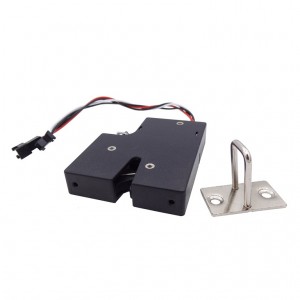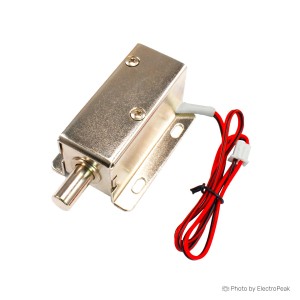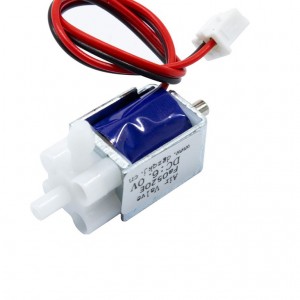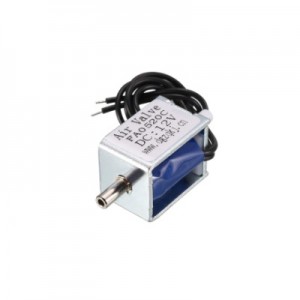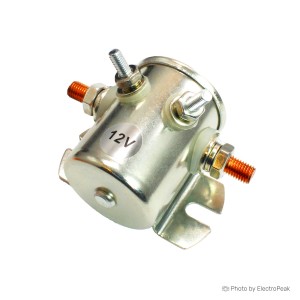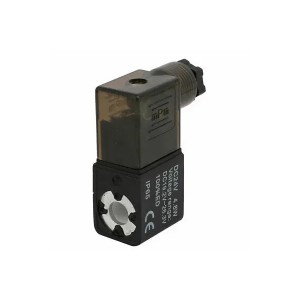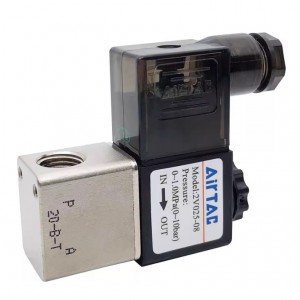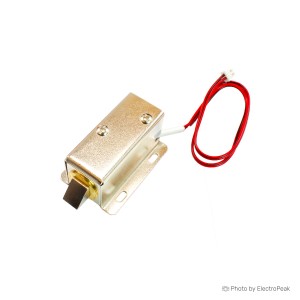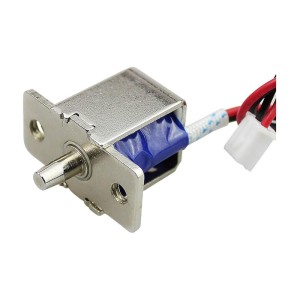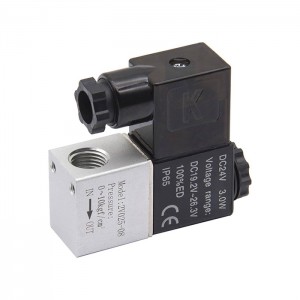Solenoid locks are designed to operate with DC (Direct Current) voltage, not AC (Alternating Current). Using AC voltage may damage the lock or result in unreliable performance. Solenoid locks typically require low-voltage DC power, often in the range of 12V or 24V, depending on the model. Always refer to the manufacturer's specifications and guidelines to ensure the proper voltage input.
Solenoid Lock
Solenoid Lock
A solenoid lock is an electromechanical device that utilizes a solenoid, an electrically controlled coil of wire, to control the locking and unlocking mechanism. When an electrical current is applied to the solenoid, it generates a magnetic field, causing the locking mechanism to either engage or disengage. Solenoid locks are commonly used in various applications, including doors, cabinets, and safes, providing a secure and electronically controlled method for access.
Price of Solenoid Locks
The cost of solenoid locks varies based on factors such as brand, features, and specifications. It's advisable to compare prices from different suppliers and consider the specific requirements of your application before making a purchase.
Tips for Buying Solenoid Locks
- Voltage Compatibility: Ensure the solenoid lock's voltage requirements align with your power supply to prevent issues with compatibility.
- Durability: Look for locks made from robust materials to ensure longevity, especially if they will be exposed to harsh conditions or heavy usage.
- Installation Ease: Choose locks with straightforward installation procedures, or seek professional assistance if needed.
- Integration Capability: If you plan to integrate the solenoid lock into a larger access control system, verify its compatibility with your existing hardware and software.
- Security Features: Evaluate additional security features such as tamper resistance, anti-picking mechanisms, and access logs, depending on your security needs.
- Weather Resistance: For outdoor applications, opt for solenoid locks designed to withstand weather conditions and temperature fluctuations.
- Remote Access Options: Consider locks that offer remote access options for added convenience and control.
Types of Solenoid Lock
Electrically Locked Solenoid Lock:
This type of solenoid lock operates by applying an electrical current to the solenoid, which in turn activates the mechanism, unlocking the door or gate. It's commonly used in access control systems where remote unlocking is required.
Fail-Safe Solenoid Lock:
In the event of a power failure, a fail-safe solenoid lock defaults to the unlocked state. This design prioritizes safety and ensures that individuals can exit freely during emergencies even if the power is cut off.
Fail-Secure Solenoid Lock:
Unlike the fail-safe counterpart, a fail-secure solenoid lock defaults to the locked state when power is cut off. This design is preferred in applications where security is paramount, and constant locking is necessary.
Magnetic Solenoid Lock:
These locks utilize a magnetic field to control the locking mechanism. They often provide a high holding force, making them suitable for applications where a strong and secure lock is required.
Spring-Loaded Solenoid Lock:
Equipped with a spring mechanism, this solenoid lock automatically engages the locking mechanism when power is interrupted. It ensures that the door or gate remains locked even without constant electrical power.
Low Power Solenoid Lock:
Designed for energy efficiency, low-power solenoid locks consume minimal electrical power during their operation. They are suitable for applications where power conservation is a priority.
High Power Solenoid Lock:
These locks are built to deliver a robust locking force, making them suitable for heavy-duty applications that require a strong and secure lock.
Biometric Solenoid Lock:
Integrating solenoid technology with biometric authentication, this type of lock enhances security by requiring biometric verification, such as fingerprints or retinal scans, for access.
Remote-Controlled Solenoid Lock:
Offering remote access and control capabilities, these locks provide flexibility in managing access points. They can be controlled remotely, making them suitable for various applications.
Double Solenoid Lock:
Incorporating two solenoids, this lock adds an extra layer of security. It typically requires dual activation for unlocking, enhancing security measures.
Can I use AC voltage for a solenoid lock?
Are solenoid locks suitable for outdoor use?
Solenoid locks designed for outdoor use are equipped with robust features to withstand various weather conditions. Look for models with weatherproof and corrosion-resistant materials such as stainless steel or zinc alloy. These locks often come with an IP (Ingress Protection) rating indicating their resistance to dust and water.
Can solenoid locks be integrated with access control systems?
Solenoid locks play a crucial role in access control systems, providing secure and controlled access to authorized individuals. Integration is seamless, enabling administrators to manage access remotely, monitor entry points, and implement comprehensive security protocols.
What is the typical power consumption of a solenoid lock?
The power consumption varies among solenoid locks, but generally, they have low power requirements. It's crucial to check the specifications of the specific model you choose to ensure compatibility with your power source.
Do solenoid locks require constant electrical power to remain locked?
The power status of solenoid locks depends on their design. However, there are fail-safe and fail-secure options. Fail-safe locks unlock when power is lost, while fail-secure locks stay locked during a power failure.
Can solenoid locks be manually overridden in case of a power failure?
Some solenoid locks have manual override options, allowing manual unlocking during emergencies or power failures. This feature provides flexibility and ensures continued functionality even in adverse situations.
Can solenoid locks be controlled remotely?
Yes, many modern solenoid locks can be controlled remotely, either through dedicated remote controllers, access control systems, or even smartphone apps, providing convenient and secure access management.
Can solenoid locks be connected to smart home systems?
Yes, solenoid locks can integrate with smart home systems, providing users with advanced control and monitoring options. This integration allows users to incorporate their solenoid locks into broader smart home ecosystems for a unified and connected experience.
What is the lifespan of a typical solenoid lock?
The lifespan of a solenoid lock varies based on factors such as quality, usage, and maintenance. High-quality locks with durable components and proper care can last for many years, ensuring long-term reliability.
Do solenoid locks have options for keyless entry?
Solenoid locks offer various keyless entry options, catering to different user preferences. These include keypad entry, RFID cards, biometric recognition, and smartphone-based entry systems. Users can choose the method that aligns with their security and convenience needs.
